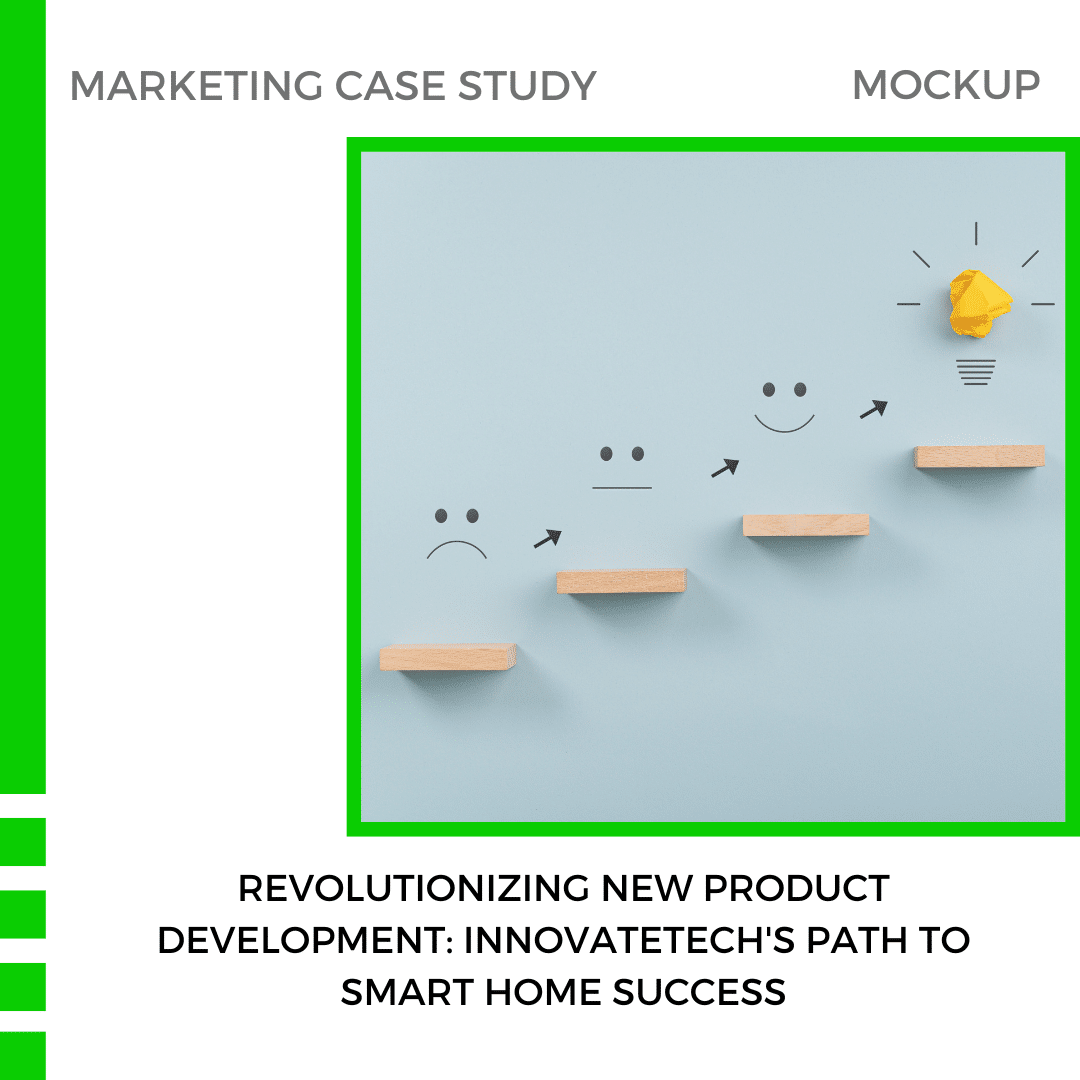
Revolutionizing New Product Development: InnovateTech’s Path to Smart Home Success
Introduction
In today’s fast-paced technology landscape, new product development (NPD) is essential for companies seeking to remain competitive and responsive to evolving consumer preferences. The ability to innovate and launch effective products can determine a company’s market success or failure. This case study explores InnovateTech, a fictional technology firm renowned for its cutting-edge consumer electronics. InnovateTech is poised to develop a new smart home device to enhance user experience by integrating seamlessly with intelligent ecosystems. By delving into their new product development strategy, students will examine both the challenges and opportunities presented during the process, evaluate the feasibility of InnovateTech’s initiatives, and offer recommendations for optimizing the launch of this innovative product.
Objectives
- Understand the stages and components of a new product development strategy.
- Analyze the market potential and feasibility of InnovateTech’s new product.
- Evaluate the challenges and risks associated with the new product development process.
- Propose recommendations for successfully developing and launching the new product.
Background Information
Key Concepts
- New Product Development (NPD): The process of bringing a new product to market, from idea generation to commercialization.
- Market Analysis: The assessment of market potential, competition, and consumer needs for a new product.
- Feasibility Study: An evaluation of a new product’s technical, operational, and financial viability.
- Product Design and Development: Creating a new product, including design, engineering, prototyping, and testing.
- Go-to-Market Strategy: The plan for launching a new product, encompassing marketing, sales, and distribution tactics.
The Company: InnovateTech
Established in 2010, InnovateTech is a leader in consumer electronics recognized for its innovative solutions and cutting-edge technology. With a robust market presence in the smart home sector, InnovateTech aims to introduce a new smart home device that promises seamless integration and enhanced user functionality.
New Product Development Strategy
Product Concept
SmartHome Hub: A versatile smart home hub is the central control unit for all smart home devices. It features voice control, AI-driven automation, advanced security protocols, and compatibility with third-party devices, and it is designed to elevate the smart home experience.
Stages of New Product Development
Stage 1: Idea Generation
- Brainstorming Sessions:
- Conduct brainstorming sessions with cross-functional teams to foster innovative ideas for features and functionalities.
- Market Research:
- Analyze current market trends and consumer needs, identifying gaps and opportunities in the smart home market.
- Customer Feedback:
- Gather insights from existing customers through surveys and focus groups to understand desired features.
Stage 2: Concept Development and Testing
- Concept Evaluation:
- Assess the feasibility and potential of the SmartHome Hub concept using a SWOT analysis.
- Prototype Development:
- Create initial prototypes of the SmartHome Hub and test for functionality and performance.
- Consumer Testing:
- Present prototypes to a select group for feedback, refining the product based on input.
Stage 3: Business Analysis
- Market Analysis:
- Estimate market size and growth potential for the SmartHome Hub, analyzing competitor positioning.
- Financial Analysis:
- Project costs, revenues, and profitability, conducting a break-even analysis for financial viability.
- Risk Assessment:
- Identify potential risks in the NPD process and develop mitigation strategies.
Stage 4: Product Development
- Engineering and Design:
- Finalize technical specifications and collaborate with engineering teams.
- Prototyping and Testing:
- Develop advanced prototypes for rigorous testing on durability and performance.
- Regulatory Compliance:
- Ensure the product meets all regulatory standards.
Stage 5: Market Testing
- Test Marketing:
- Launch the SmartHome Hub in select markets to gather feedback.
- Marketing Strategy:
- Develop a comprehensive marketing plan utilizing digital marketing, social media, and influencer partnerships.
- Sales and Distribution:
- Establish distribution channels and train sales teams on product features.
Stage 6: Commercialization
- Product Launch:
- Officially launch the SmartHome Hub in target markets with marketing campaigns to generate interest.
- Post-Launch Review:
- Monitor product performance and gather customer feedback.
- Continuous Improvement:
- Iterate on the product based on feedback and plan future updates.
Case Study Analysis
Task 1: Assess the Market Potential
- Market Size and Growth:
- Analyze the current and projected growth of the smart home market.
- Competitive Landscape:
- Evaluate the strengths and weaknesses of major competitors, identifying market gaps.
- Consumer Insights:
- Analyze consumer preferences related to smart home devices and potential demand for the SmartHome Hub.
Task 2: Evaluate the Feasibility of the SmartHome Hub
- Technical Feasibility:
- Assess technical challenges and requirements.
- Operational Feasibility:
- Analyze operational processes required for development.
- Financial Feasibility:
- Assess financial viability, projected costs, and revenues.
Task 3: Identify and Mitigate Potential Risks
- Development Risks:
- Identify technical and operational risks and develop mitigation strategies.
- Market Risks:
- Assess potential market risks and develop contingency plans.
- Regulatory Risks:
- Identify regulatory compliance issues and strategies for compliance.
Task 4: Propose Recommendations for Optimization
- Enhancing Product Development:
- Suggest improvements to the design and development process for efficiency.
- Optimizing the Go-to-Market Strategy:
- Recommend enhancements to marketing and sales strategies.
- Ensuring Long-Term Success:
- Propose strategies for continuous improvement and customer loyalty.
Conclusion
In conclusion, this case study highlights the importance of a well-structured new product development strategy in successfully bringing InnovateTech’s SmartHome Hub to market. Students can derive valuable insights into the complexities of NPD processes by analysing market potential, feasibility, and risk management. InnovateTech must remain agile and receptive to market feedback to continuously improve its product, ensuring long-term success in a competitive landscape.
Possible Solution: Implementing an Agile Development Approach
The company should adopt an agile development approach to enhance InnovateTech’s new product development process. This strategy allows for iterative progress through small, manageable increments, enabling rapid feedback and flexibility in responding to market changes.
Key Features of the Agile Development Approach
- Cross-Functional Teams:
- Form small, cross-functional teams with members from various departments, fostering collaboration and innovative thinking.
- Iterative Prototyping:
- Develop and test prototypes in short cycles, continuously gathering user feedback and refining the product.
- Regular Checkpoints:
- Implement regular review sessions to assess progress, make adjustments, and ensure alignment with market needs.
- Customer-Centric Focus:
- Involve customers throughout development to ensure the final product meets their expectations and needs.
References
- Harvard Business Review on New Product Development
- Forbes on Agile Development in Tech
- McKinsey Insights on Product Development



